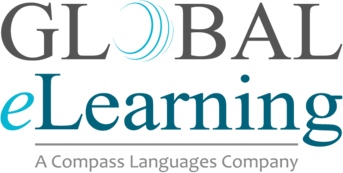Top 4 Benefits of a Centralized Localization Strategy
Is your company headquartered in the US with employees working globally? How will you effectively train and develop a global workforce? Should you manage the process at the hub of corporate learning and development or push this task to the local office? Does your company want to have a centralized or de-centralized localization program? In this article, we’ll discuss the 5 benefits of a centralized localization strategy. First, let’s consider the difference between a centralized and de-centralized program:
- Centralized Localization Program – a company with international offices/facilities creates all multi-lingual versions of its training content from its central L&D location so that ownership and control of every language version remain in the hands of a central body.
- De-Centralized Program – a global company with offices/facilities in multiple countries decides to hand off all training responsibilities to each international entity in order that they assume responsibility for communication, training, and development of local staff and employees.
It is almost always better to engage a centralized localization strategy so that you can ensure your content is delivered as intended, to the target audience. Consider these other advantages to a centralized localization strategy:
1. Engaging Learners
Your learning and development team spends considerable time and effort to develop content and training material for the desired outcomes. Shouldn’t the same principles be applied when translating or localizing that content for an audience that speaks in a different language, or has different cultural nuances? A centralized program allows your team to oversee the localization process and ensure the best chance of desired outcomes.
2. Control the Accuracy of L&D Content Localization and Purity of the Instruction
A company’s reputation is at stake everywhere it has operations. When specific policies are created in one language and then handed to an international office for their interpretation and translation, instructions often lose their purity. When policies involve sensitive or controversial subject matters (bribery, sexual harassment, equality, etc.) then certain cultures may deliberately alter descriptions and consequences for non-conformance. For precise sales strategies or data security measures, local translators may not grasp terminology or capture the true intent of the instruction. Whether sales or IT, there is too much risk of having confused, local employees.
3. Assure the Standardization of Processes Across All Operations
When a manufacturer has facilities in multiple countries and is exporting from each facility, the ability to make the most profitable export decisions will depend on understanding costs. Localizing training on processes and reporting standards within the control of a central L&D body gives a global company its best opportunity to standardize its global data.
4. Manage the Speed of Change
In the modern global economy, where dissemination of information and strategy is extremely time sensitive, a company must maximize speed, while ensuring accuracy. Security protocols, safety training, and other material are important and must be delivered expeditiously, while still ensuring the content is appropriate for the target audience. Expecting international offices to localize training material for their local staff often results in a lower priority, when the individual(s) who are tasked with this responsibility find the time – among their normal job responsibilities. A localization partner, such as Global eLearning, can help maximize the effectiveness of training while delivering it in a format that is easily consumable by the target audience.
These benefits make clear the advantages of a centralized localization strategy, specifically for eLearning purposes. Do you need help measuring the ROI of Localization for Corporate Training? Do you need a more effective way to implement localization in your organization? Global eLearning has developed resources to enhance your localization initiatives. Download our free ebook “Creating an Impactful eLearning Localization Strategy” filled with tips on how to manage the localization process, while saving time and money, or contact for your eLearning Needs Today!

Gary Schulties is the President of Global eLearning. Learn more about Gary!


